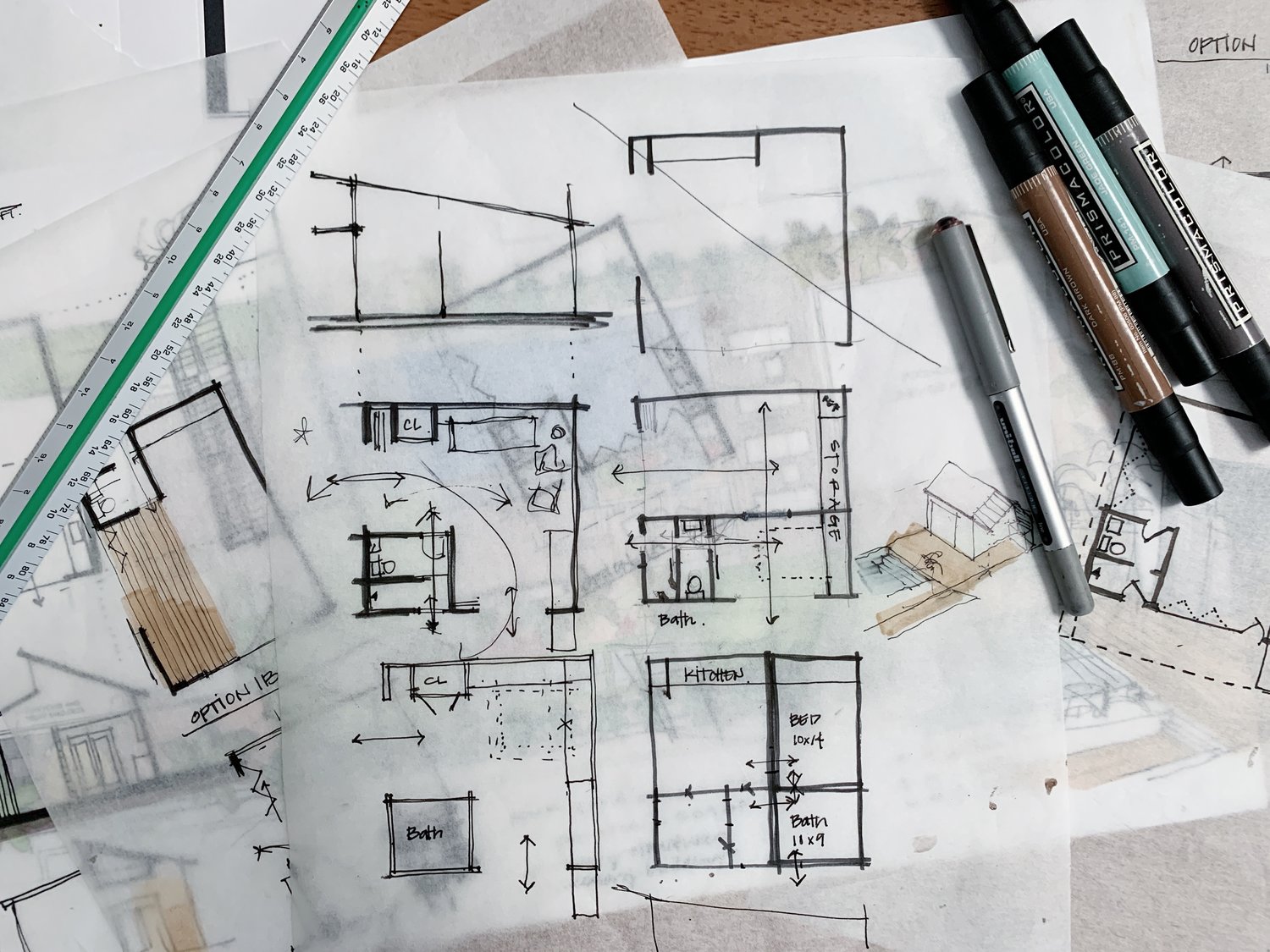Understanding the Diverse Career Paths Available for Aspiring Architect
As an aspiring Architect, you have a world of profession paths waiting on you. Each path uses unique challenges and possibilities to apply your creative thinking and technical knowledge. Whether you're drawn to traditional design or the subtleties of sustainable design, there's a niche that straightens with your interests. Comprehending these varied options can form your expert trip, but which direction will you choose to discover initially?
Conventional Style: Creating Buildings and Structures
Traditional architecture focuses on making structures and frameworks that mix functionality with aesthetic appeal. Your styles can show social heritage, showcasing regional practices while fulfilling contemporary needs.
You'll develop skills in drafting, model-making, and site evaluation, enabling you to visualize and communicate your ideas successfully. Engaging with customers, you'll need to comprehend their vision and translate it right into viable designs.
In addition, constructing codes and sustainability methods are necessary in your work, ensuring your frameworks are risk-free and eco-friendly. As you grow in your career, you'll locate chances in domestic, commercial, or also repair tasks, each offering special difficulties. Accepting traditional architecture leads the means for a fulfilling career that admires the past while forming the future.
Urban Preparation: Forming Neighborhoods and Public Spaces
As an aspiring Architect, you can play an important role as a city planner, transforming just how neighborhoods connect and operate. By employing area involvement methods, you'll guarantee that citizens have a voice in shaping their environment. Plus, integrating sustainable layout concepts will certainly help develop rooms that not only meet today's requirements however additionally safeguard the future.
Role of Urban Planners
While several could assume of designers as the sole enthusiasts behind structures, urban coordinators play an essential function in shaping the wider landscape of neighborhoods and public rooms. By working together with different stakeholders, you'll help develop parks, transportation systems, and domestic areas that advertise social interaction and accessibility. Your proficiency in spatial layout and neighborhood dynamics permits you to picture future development while maintaining social heritage.
Neighborhood Interaction Methods
Effective community involvement strategies are vital for urban organizers to assure that the voices of citizens are heard and valued in the planning procedure. To cultivate purposeful discussion, you should prioritize open discussion forums and workshops where neighborhood participants can share their ideas and worries. By proactively including and listening comments, you'll produce spaces that mirror the community's demands, ultimately leading to more lasting and successful city atmospheres.
Lasting Layout Principles
When designing city areas, incorporating lasting style principles is essential for creating settings that grow both environmentally and socially. Consider incorporating environment-friendly spaces, like gardens and parks, to boost biodiversity and enhance air quality.
Designing with water preservation in mind is likewise key-- think of rainfall yards and permeable surface areas to manage stormwater. Including community participants during the preparation process warranties that the spaces you create satisfy their needs and motivate social communication. By accepting these principles, you'll add to dynamic, lasting urban landscapes that profit everyone.

Landscape Style: Developing Lasting Outside Environments
As you discover landscape design, you'll discover essential design principles that create practical and lovely outside spaces. Lasting practices play an important duty in making sure these environments grow while lessening environmental influence. Plus, you'll find a range of career possibilities that enable you to make an actual difference in just how people communicate with nature.
Design Concepts in Landscape
Comprehending layout principles in landscape style is essential for developing sustainable outside settings that harmonize with nature. You'll require to consider components like proportion, scale, and equilibrium to guarantee your styles really feel cohesive and inviting. Incorporating indigenous plants not only improves biodiversity yet also lowers water use, making your landscape resilient. Consider the circulation of room and how people engage with it; paths and seating areas ought to welcome expedition and leisure. In addition, take note of seasonal adjustments, designing with materials that match the surroundings year-round (Architect). By focusing on sustainability and aesthetic appeals, you can produce outside areas that enrich the community and promote wellness. Welcoming these concepts will certainly establish a solid structure for your job in landscape architecture.
Lasting Practices Review
Lasting techniques in landscape design not just concentrate on aesthetics however additionally prioritize ecological health and source preservation. By integrating indigenous plants, you enhance biodiversity and reduce the demand for chemical plant foods and pesticides. Implementing reliable watering systems assists conserve water and decreases overflow, safeguarding neighboring ecological communities. You can create spaces that advertise soil wellness, such as practicing and making use of natural products permaculture principles. In addition, integrating green facilities, like rainfall gardens and permeable pavements, help in stormwater management and minimizes city warm. When you develop outside settings with sustainability in mind, you contribute to a much healthier world and provide spaces that promote community connection. Eventually, these practices assure your styles profit both individuals and the environment for many years to come.
Job Opportunities Exploration
With a strong foundation in lasting methods, landscape architecture offers a selection of career courses that permit you to make a significant impact on the setting. Urban organizers often team up with landscape designers to create eco-friendly spaces in urban settings, improving city livability. If you're passionate regarding education, take into consideration coming to be a landscape design educator, motivating future generations.
Sustainable Style: Focusing on Eco-Friendly Practices
As you discover your occupation in design, welcoming eco-friendly methods can establish you apart in a competitive area. Lasting style concentrates on her comment is here creating structures that lessen environmental effect while boosting resident wellness. By integrating renewable materials, energy-efficient systems, and lasting structure techniques, you'll add to a greener future.
Begin by getting understanding of eco-friendly accreditations like LEED or BREEAM, which can strengthen your qualifications. Think about just how all-natural light, air flow, and thermal efficiency can enhance design. Collaborate with engineers and ecological experts to innovate remedies that reduce waste and save resources.
Do not forget the relevance of community involvement-- engaging regional stakeholders can inspire styles that balance with the setting. As customers progressively prioritize sustainability, your expertise in eco-friendly techniques will certainly not only draw in tasks yet additionally accomplish your interest for liable architecture. Embrace this important element of the occupation, and view your profession thrive.
Historic Preservation: Protecting and Restoring Cultural Heritage
While you commence on your architectural journey, consider the important role of historic preservation in maintaining our social heritage. This area concentrates on the security and remediation of considerable buildings, sites, and frameworks that inform the stories of our past. By engaging in historical conservation, you'll assist secure the building tradition that forms neighborhood identity.
As a historical preservation Architect, you'll assess historical significance and analyze the condition of structures. You'll work very closely with preservationists and chroniclers to assure genuine remediation strategies are utilized. This job path permits you to blend creative thinking with research study, allowing you to develop solutions that appreciate initial materials and workmanship.
Your job not only adds to sustainability by reusing existing structures however likewise cultivates a sense of satisfaction within communities. Welcoming this path will certainly aid you end up being a guardian of background, preserving the tales and aesthetics that enhance our lives.
Inside Architecture: Enhancing Indoor Spaces
Historical conservation and interior style both share a commitment to improving the constructed environment, however they concentrate on different facets. While historic preservation highlights keeping a framework's historical and social worth, indoor style zeroes in on enhancing interior rooms for capability and looks.
As a hopeful Architect, you'll locate that indoor architecture allows you to blend creativity with technological abilities. You'll make rooms that not just look good yet also promote comfort and efficiency. This field involves understanding how light, color, and materials communicate within an area, impacting mood and use.
You'll work with different projects, from household homes to commercial workplaces, making read what he said certain that each setting fulfills the demands of its owners. By focusing on individual experience, you can transform interiors into motivating and useful rooms, making a considerable effect on how people interact with their environments. Welcome the possibility to improve indoor atmospheres and shape the way people function and live.
Industrial Style: Merging Capability With Visual Appeals
Industrial layout plays an essential duty in developing items that flawlessly blend looks with performance, guaranteeing that what you use everyday is not only visually enticing however also sensible. As a hopeful Architect, you might immerse on your own in this field, concentrating on developing everything from furnishings to consumer electronic devices. Your work entails comprehending customer requirements, materials, and producing processes, enabling you to create innovative services that boost everyday experiences.
In industrial style, you'll usually collaborate with marketing experts, designers, and suppliers, guaranteeing that your styles are not only lovely yet additionally practical. This occupation path provides a dynamic setting where creative thinking satisfies functionality, making it a gratifying choice for engineers interested in forming the products of tomorrow.
Frequently Asked Inquiries
What Educational Accreditations Do I Need to Become an Engineer?
To end up being an architect, you'll require a professional level in architecture, typically a Bachelor's or Master's. Additionally, you'll need to finish an internship and pass the Architect Registration Examination to exercise lawfully.
Exist Accreditation Requirements for Various Architectural Job Paths?
Yes, there're accreditation needs for different architectural courses. Architect. You'll need to pass examinations, complete teaching fellowships, and sometimes pursue specialized training, relying on your selected emphasis, like landscape architecture, metropolitan style, or historical preservation
What Software Skills Are Essential for Designers Today?

Exactly How Can I Gain Practical Experience While Examining Architecture?
You can get useful experience by interning at building firms, joining style competitions, offering for community jobs, or collaborating with schoolmates on real-world projects. These chances enhance your skills and develop beneficial connections in the sector.
What Task Opportunities Exist Outdoors Traditional Design Firms?
You can explore different work chances outside traditional style companies, like city preparation, interior decoration, landscape style, building administration, realty development, or even duties in sustainability consulting. Each offers view publisher site unique difficulties and incentives.
Whether you're drawn to standard style or the nuances of sustainable layout, there's a specific niche that straightens with your passions.When developing metropolitan rooms, including lasting design principles is critical for creating atmospheres that prosper both environmentally and socially.As you check out landscape style, you'll discover important style concepts that produce attractive and useful outside areas.Comprehending style principles in landscape architecture is vital for developing lasting exterior settings that integrate with nature.In commercial style, you'll frequently work together with marketing professionals, producers, and designers, making sure that your styles are not just gorgeous however likewise practical.